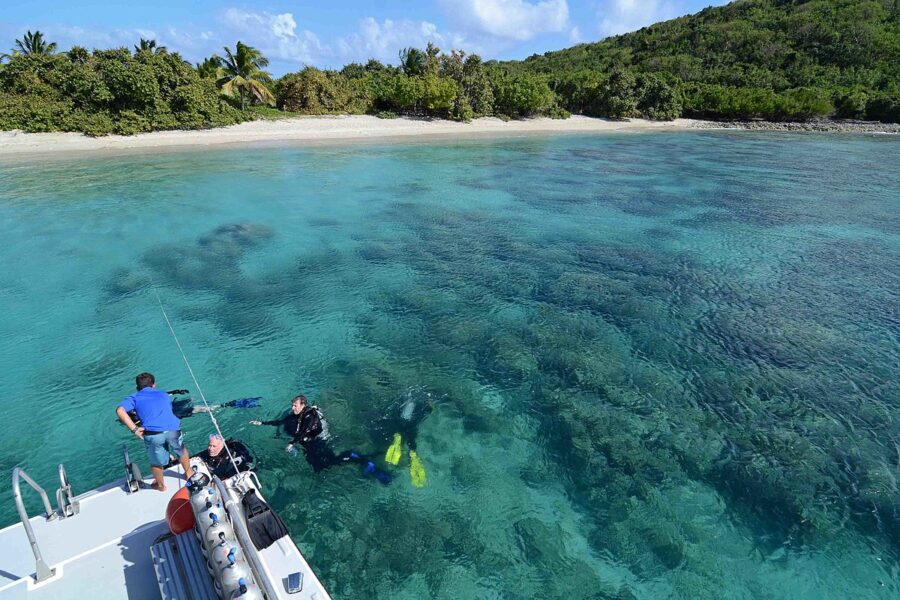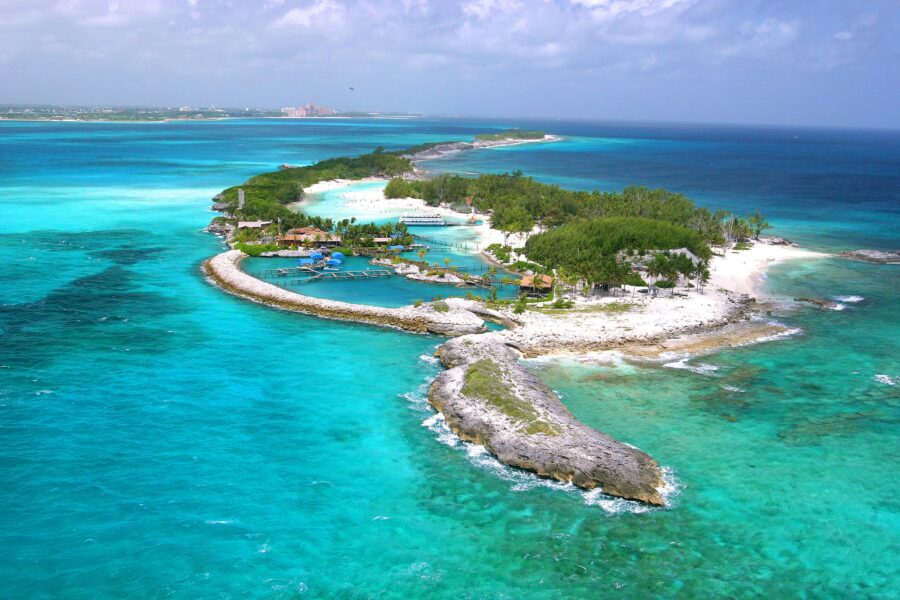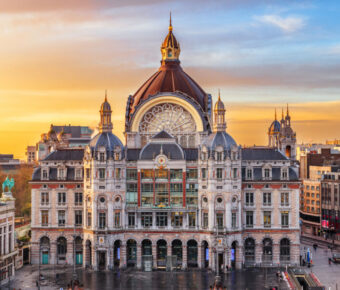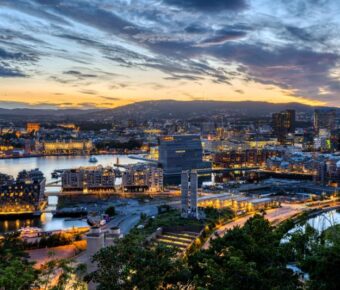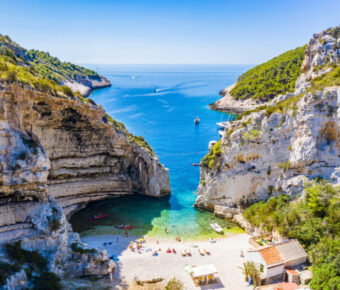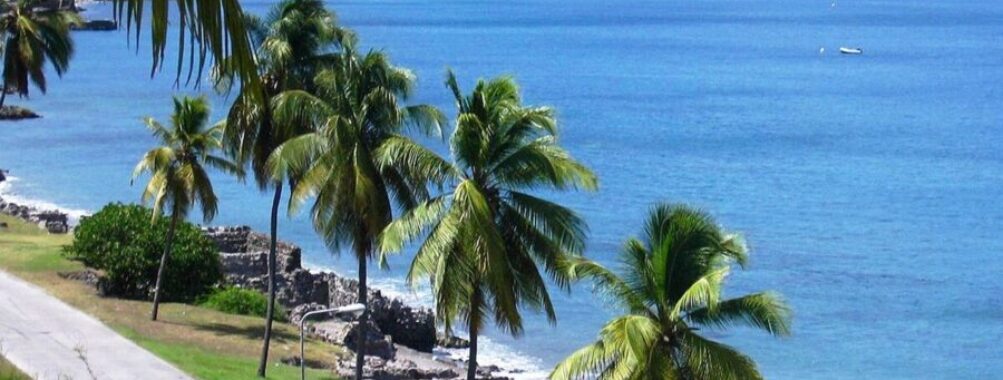
9 Stunning Caribbean Islands Without Cruise Ships for Authentic Paradise
Tired of crowded beaches, manufactured experiences, and the daily influx of thousands of cruise passengers? Imagine stepping onto pristine shores where the only footprints are yours and those of local fishermen. After analyzing dozens of Caribbean destinations, I’ve identified nine remarkable islands that physically cannot accommodate cruise ships—ensuring authentic experiences for travelers seeking the Caribbean’s true essence.
These hidden gems offer everything from volcanic hikes and world-class diving to pink-sand beaches and untouched coral reefs—all without a cruise ship in sight. Based on extensive travel across the region, these islands deliver the perfect blend of adventure, relaxation, and cultural immersion that independent travelers crave.
Contents
- 1. Saba: The Caribbean’s “Unspoiled Queen”
- 2. Providencia, Colombia: Seven Shades of Blue, Zero Crowds
- 3. Little Corn Island, Nicaragua: The Off-Grid Paradise
- 4. Culebra, Puerto Rico: Flamenco-Blue Perfection
- 5. Carriacou, Grenada: Boat-Builders & Barefoot Beaches
- 6. Salt Cay, Turks & Caicos: Whales, Walls & Absolute Quiet
- 7. St. Eustatius (Statia): Time-Capsule Dutch Caribbean
- 8. Anegada, British Virgin Islands: Remote Reef Paradise
- 9. Barbuda: Castaway Paradise with Pink Sands
- How to Choose Your No-Cruise Paradise
- More Travel Guides
1. Saba: The Caribbean’s “Unspoiled Queen”
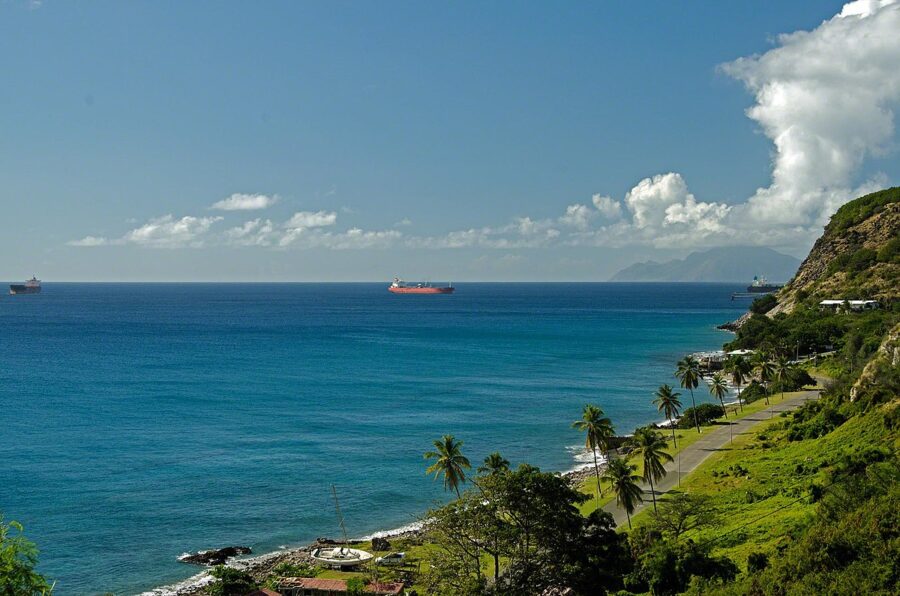
Fast Facts:
- Size/Population: 5 sq mi; ~2,000 residents
- Why Ships Stay Away: Sheer cliffs ring the island; tiny Fort Bay harbor fits only ferries and fishing boats
- Perfect For: Hiking enthusiasts, advanced divers, and authentic culture seekers
Saba rises dramatically from the ocean like something from a fantasy novel—a volcanic peak surrounded by sheer cliffs that make large ship docking physically impossible. This Dutch Caribbean gem is affectionately known as “The Unspoiled Queen,” and for good reason.
The island operates entirely at human scale: one road aptly nicknamed “The Road,” no traffic lights, no chain restaurants, and absolutely zero cruise terminals. What you will find are meticulously maintained hiking trails through cloud forest, including the 1,064 hand-cut steps up Mount Scenery (887 meters), the highest point in the Netherlands.
Divers consider Saba a bucket-list destination, with pristine underwater pinnacles where sea sponges bloom in neon colors against black volcanic rock. The Saba Marine Park’s strictly protected status means healthy coral and abundant marine life, with dive sites like “The Needle” and “Third Encounter” consistently ranked among the Caribbean’s best.
In Saba’s tidy villages of red-roofed cottages, you’ll find artisans practicing traditional lace-making, small restaurants serving freshly caught fish, and locals who still serve homemade Saba Spice rum. With fewer than 2,000 residents, everybody waves, and hitchhiking remains the default ride-share.
Pro Tip: The tiny Juancho E. Yrausquin Airport features the world’s shortest commercial runway (1,300 feet). Flights from St. Maarten take just 15 minutes, but the approach between cliffs is not for the faint-hearted. The more relaxed alternative is the ferry from St. Maarten (90 minutes).
2. Providencia, Colombia: Seven Shades of Blue, Zero Crowds

Fast Facts:
- Location: Part of the Seaflower Biosphere Reserve, boasting the world’s third-largest barrier reef
- Why Ships Stay Away: No cruise pier; entry only via 20-seat puddle jumper or catamaran from San Andrés
- Perfect For: Snorkelers, beach purists, and those seeking authentic Caribbean culture
Providencia feels like the Caribbean’s answer to Narnia: hard to reach but impossibly beautiful once you arrive. Geographically closer to Nicaragua but belonging to Colombia, this remote island maintains its Creole culture and pristine environment precisely because there’s no way for cruise ships to dock.
The most striking feature is what locals call the “Sea of Seven Colors”—a mesmerizing spectrum of blue and turquoise waters protected by the third-largest barrier reef in the world. Marine life thrives in these waters, making snorkeling here comparable to swimming in a natural aquarium filled with eagle rays, nurse sharks, and tropical fish.
The island’s single road loops around in a lazy circle, with palm-fringed beaches sitting empty apart from fishermen mending hand-lines. Traditional wooden boats known as “lanchas” are still built by hand, and fresh seafood is served in casual restaurants where reggae and calypso beats play in the background.
Island lore—pirates! buried treasure!—is told in lilting English-Creole by locals who always seem to have time for a chat. The highest point, “El Pico,” offers panoramic views for those willing to make the moderate hike through lush vegetation.
Pro Tip: For the most sublime swimming experience, hire a boat to Cayo Cangrejo (Crab Cay), a tiny islet with a natural swimming pool in the middle of the reef. The crystal-clear waters here display the full “seven colors” spectrum.
3. Little Corn Island, Nicaragua: The Off-Grid Paradise

Fast Facts:
- Size: 1.5 sq mi; no cars, ATMs, or paved roads
- Why Ships Stay Away: Reef-ringed shallows and zero port facilities—arrival is by open panga boat after a regional flight
- Perfect For: Digital detoxers, budget travelers, and those seeking true escape
If “idyllic” seems overused in travel writing, Little Corn Island redefines it. This tiny speck in the Caribbean Sea (off Nicaragua’s east coast) has intentionally resisted development: no motorized vehicles, limited electricity, and a strictly enforced building height restriction that ensures nothing rises above the palm trees.
The only way to reach Little Corn is via a choppy 30-minute open-boat ride from Big Corn Island (itself accessible only by small plane or cargo boat from mainland Nicaragua). This logistical barrier has naturally filtered out mass tourism, ensuring your footprints will remain among the few on its sugar-soft paths.
Days begin with barefoot strolls to beachfront cafés for coconut bread and local coffee, and end with bioluminescent speckles under a Milky Way-filled sky. In between, snorkel directly offshore to see nurse sharks and spotted eagle rays, or arrange a diving excursion to explore healthy reefs rarely visited by other divers.
Electricity runs only at certain hours, Wi-Fi is whimsical at best, and conversations happen face-to-face rather than through screens. Local dive shops double as community centers, and fishermen still spear lobster for your dinner ceviche the same day you’ll eat it.
Pro Tip: Pack a headlamp or flashlight—paths are unlit after dark, and the stargazing is spectacular. Also, bring sufficient cash; there are no ATMs, and few places accept cards.
See Related: Hidden Caribbean Beaches Locals Don’t Want Tourists Finding
4. Culebra, Puerto Rico: Flamenco-Blue Perfection
Fast Facts:
- Access: 35-min puddle-jumper flight or one-hour ferry from Puerto Rico—nothing larger fits
- Claim to Fame: Flamenco Beach, often ranked among the world’s top beaches
- Perfect For: Beach aficionados, wildlife enthusiasts, and those seeking easy off-grid access
Culebra’s poster-child beach looks Photoshopped: a horseshoe bay of white sand fading into electric-turquoise shallows that seem impossibly vibrant. What’s missing from the panorama are cruise funnels—there’s simply nowhere for large ships to dock.
This lack of mass tourism infrastructure keeps the vibe refreshingly raw: roads are pothole-speckled, nights are dark-sky spectacular (perfect for stargazing), and dinner might be lion-fish tacos at a shack that closes when the owner feels like going surfing.
Most of Culebra (about 20 miles east of Puerto Rico’s mainland) is protected as a National Wildlife Refuge, ensuring its coral reefs, mangrove forests, and sea turtle nesting beaches remain pristine. Snorkel at Carlos Rosario or Tamarindo Beach for sea turtle encounters, kayak through mangrove channels, or simply claim your spot on Flamenco Beach and marvel at water colors that defy belief.
The island’s small town, Dewey, consists of just a few streets with casual restaurants, small guesthouses, and golf-cart rental shops—transportation of choice for most visitors. The island’s unhurried pace and lack of development create a refreshing contrast to Puerto Rico’s more developed destinations.
Pro Tip: Ferry tickets from Ceiba, Puerto Rico, can sell out during high season and weekends. Book in advance through the official system, or consider the slightly pricier but more reliable puddle-jumper flights from San Juan or Ceiba.
5. Carriacou, Grenada: Boat-Builders & Barefoot Beaches
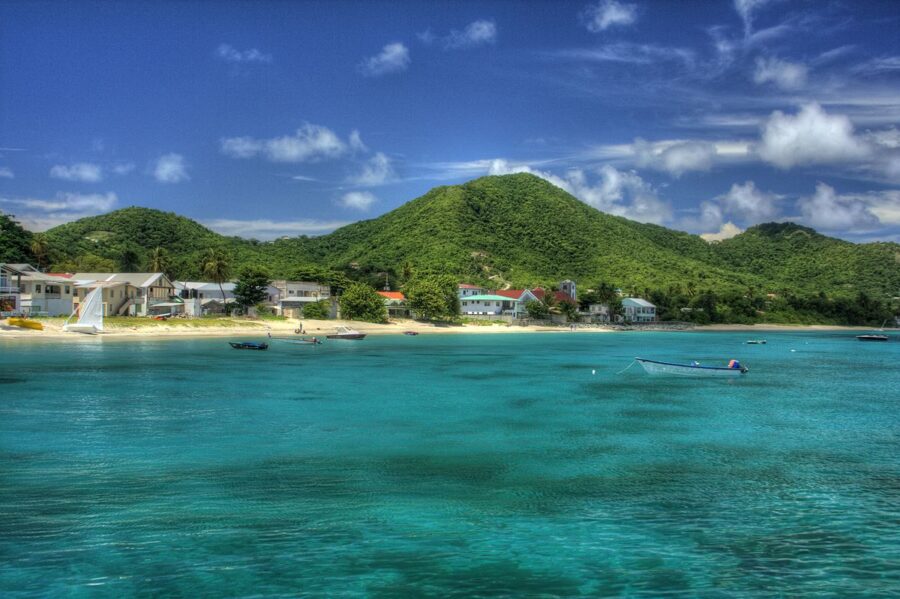
Fast Facts:
- Nickname: “Isle of Reefs” (33 logged dive sites)
- Why Ships Stay Away: No pier big enough; even expedition yachts must tender into Hillsborough
- Perfect For: Sailors, cultural immersion seekers, and uncrowded beach lovers
Life in Carriacou moves to the rhythms of trade winds and reggae, not cruise-ship whistles. This 13-square-mile island belongs to Grenada but feels worlds away from its more developed sister. With no floating megahotels emptying thousands of day-trippers onto its one-lane roads, Carriacou delivers unfiltered Caribbean culture—sweetened by homemade lime-rum and calypso beats after dark.
The island preserves maritime traditions that have largely vanished elsewhere in the Caribbean. Visit the village of Windward to watch wooden sloops under construction using techniques passed down for generations. Ship-wrights still shape masts by eye, and boats are launched with community celebrations.
Beaches like Paradise Beach and Sandy Island offer the requisite white sand and crystalline waters but without the crowds—you’ll count more sea turtles than loungers. Snorkelers can drift off Sandy Island over gardens of elkhorn coral, while divers can explore the 33 logged dive sites, including the twin wrecks of the Boris and Westsider.
The main town of Hillsborough offers a handful of restaurants serving authentic local cuisine like oil-down (Grenada’s national dish) and lambi (conch). Fishermen still sell their catch directly from small boats at the jetty, and from April to August, the island comes alive with Maroon and String Band Music Festival celebrations.
Pro Tip: Time your visit to coincide with the Carriacou Regatta (first weekend in August), when traditionally built wooden sailing vessels race in spirited competition, followed by beach parties and cultural performances.
6. Salt Cay, Turks & Caicos: Whales, Walls & Absolute Quiet
Fast Facts:
- Population: ~100 souls; donkey carts outnumber cars
- Why Ships Stay Away: Shallows and environmental zoning; a proposed pier remains stalled
- Perfect For: Whale watchers, wall divers, and solitude seekers
Salt Cay is the kind of place where dive boats radio each other when a new restaurant opens—because there might be only three. Once the salt-producing hub of the Turks & Caicos Islands, today this tiny island (just 2.5 square miles) is home to roughly 100 residents and a handful of visitors seeking the ultimate escape.
The island’s name reveals its history—salt pans still crisscross the interior, creating crystal-encrusted flats perfect for beachcombing. Donkey carts outnumber cars, and wild donkeys (descendants of those used in the salt industry) roam freely.
Between January and April, Salt Cay becomes one of the world’s premier whale-watching destinations as North Atlantic humpbacks migrate through the Columbus Passage. Snorkelers can respectfully observe these magnificent creatures in crystal-clear waters—an unforgettable experience.
Divers rave about the dramatic wall dives just offshore, where the continental shelf drops thousands of feet into the abyss. Sites like “Great Wall” offer chances to see spotted eagle rays, reef sharks, and colorful sponge formations without another dive boat in sight.
With no airport runway for jets and no deep-water port, Salt Cay remains delightfully undeveloped. Accommodations are limited to a handful of guesthouses and rental cottages, most converted from historic salt merchants’ homes.
Pro Tip: Stock up on supplies before arriving, as the island has just one small market with limited inventory. Better yet, arrange for your guesthouse host to prepare meals using locally caught seafood.
See Related: Breathtaking Best Beaches in Europe (With Hidden Gems!) 🏖️
7. St. Eustatius (Statia): Time-Capsule Dutch Caribbean
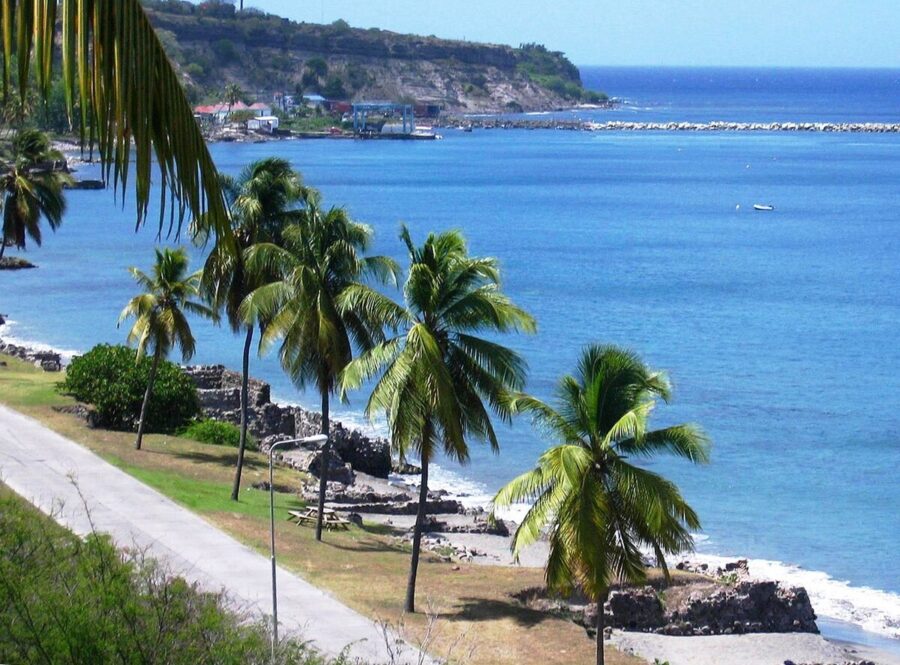
Fast Facts:
- Star Draw: The dormant Quill volcano and 36 dive sites strewn with 18th-century wrecks
- Why Ships Stay Away: No deep-water pier; the island actively caps tourism to keep things local
- Perfect For: History buffs, wreck divers, and hikers seeking solitude
Locals call Statia the island “where everybody waves”—and they still have time to, because mass tourism never arrived. This 8-square-mile Dutch municipality was once the “Golden Rock” of the Caribbean, a bustling free port with over 20,000 inhabitants in the 18th century. Today, fewer than 3,500 people live here, and the island’s commitment to sustainable tourism means keeping it that way.
Instead of souvenir rows, you’ll find crumbling British forts draped in bougainvillea, a charming main street of historic buildings in Oranjestad (the capital), and reefs so healthy that marine biologists use them as Caribbean benchmarks. Dive boats often share the anchorage with exactly zero other vessels, a statistic helped by the island’s conscious ban on large-ship infrastructure.
The Quill, a dormant volcano rising to 600 meters, dominates the southern end of the island. A moderately challenging hike takes you up and into the crater, where a rainforest microclimate nurtures giant ferns, mahogany trees, and wild orchids. For history enthusiasts, the island’s rich past is evident in archaeological sites and the excellent St. Eustatius Historical Foundation Museum.
With just a handful of restaurants and small hotels, Statia offers an authentic experience that is increasingly rare in the Caribbean. Come for the wrecks and reefs; stay for the easy camaraderie that makes you feel part of a living village, not a theme park.
Pro Tip: After a day of hiking or diving, grab a rum punch at one of the historic warehouse taverns near Lower Town Beach, where 18th-century ruins merge with the shoreline—a photographer’s dream at sunset.
8. Anegada, British Virgin Islands: Remote Reef Paradise

Fast Facts:
- Unique Feature: The only coral atoll in the British Virgin Islands, surrounded by Horseshoe Reef (Caribbean’s 4th largest)
- Why Ships Stay Away: Shallow waters, treacherous reef approaches, and no docking facilities
- Perfect For: Secluded beach lovers, snorkelers, and seafood enthusiasts
Unlike its mountainous neighbors in the British Virgin Islands, Anegada is a flat coral atoll barely rising above sea level—so low it’s often invisible until you’re nearly upon it. This geological uniqueness is precisely what keeps cruise ships away; the surrounding Horseshoe Reef has claimed over 300 shipwrecks, creating a natural barrier to mass tourism.
The island’s isolation rewards visitors with 18 miles of pristine beaches where conch shells and driftwood outnumber people. Loblolly Bay and Cow Wreck Beach offer powder-white sand and gin-clear waters perfect for snorkeling right from shore. The reef creates a natural swimming pool effect in many areas, with calm, shallow waters teeming with tropical fish.
Anegada is famous for its lobster—so much so that many sailing charters from Tortola make the journey specifically for the island’s lobster feasts. Local fishermen still trap these spiny delicacies using traditional methods, and restaurants prepare them fresh on beachside grills.
The island’s salt ponds attract a stunning array of bird life, including rare roseate flamingos that were reintroduced after disappearing in the 1950s. These pink sentinels add another splash of color to an already stunning natural palette.
With its sparse population (about 300 residents) and limited development, Anegada offers a refreshingly simple island experience. Accommodations range from small beachfront hotels to rental cottages, all maintaining the island’s low-key charm.
Pro Tip: Rent a scooter or Jeep to explore the island’s entirety—it’s the best way to discover secluded beaches and hidden snorkeling spots. Ask locals about tide times; some of the best swimming areas are tide-dependent.
9. Barbuda: Castaway Paradise with Pink Sands
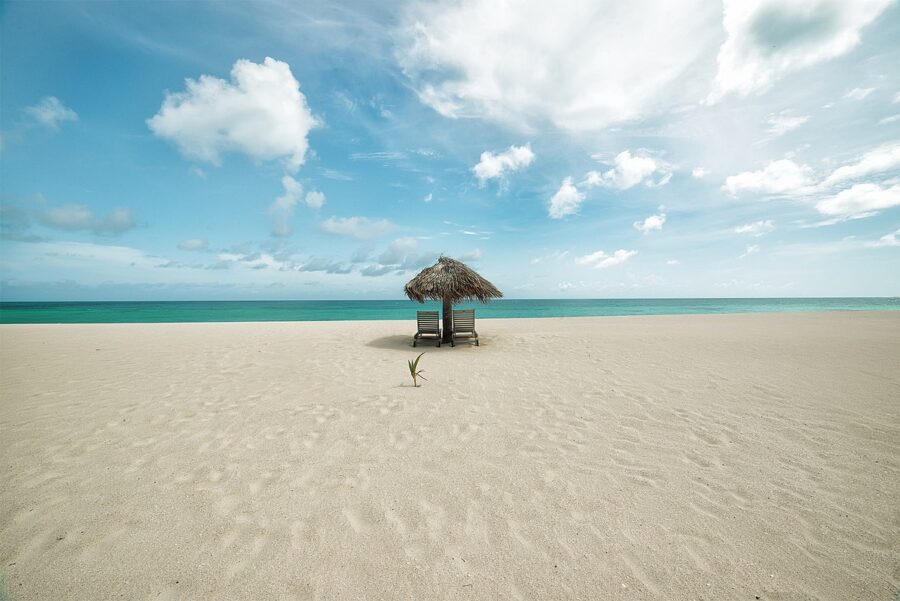
Fast Facts:
- Unique Feature: 17-mile stretch of uninterrupted pink-sand beach—one of the longest in the Caribbean
- Why Ships Stay Away: No appropriate docking facilities; strong local opposition to cruise tourism
- Perfect For: Beach purists, wildlife enthusiasts, and true escapists
Sister island to Antigua but worlds apart in development, Barbuda remains nearly untouched by mass tourism, with locals fiercely protecting its pristine environment. While Antigua welcomes cruise ships daily, Barbuda has intentionally avoided developing port facilities that could accommodate large vessels.
The result is an island of sublime natural beauty, headlined by a 17-mile stretch of pink-sand beach where you might not see another soul all day. The blush color comes from millions of crushed red shells mixed with white sand—most striking at sunrise and sunset when the pink hues intensify.
Barbuda’s shallow Codrington Lagoon hosts the largest frigate bird colony in the Western Hemisphere, accessible only by small boat with local guides. Watching these magnificent birds with their distinctive red throat pouches during mating season is an unforgettable wildlife encounter.
The island’s single village, Codrington, is home to most of Barbuda’s 1,800 residents. Life here moves at an unhurried pace, with fishing and agriculture still the main occupations. Development remains minimal by local choice—there are no large resorts, shopping centers, or cruise terminals to disturb the island’s tranquility.
Accommodations are limited to a handful of small hotels and guesthouses, ensuring the island never feels crowded. Electricity can be intermittent, Wi-Fi spotty, and nightlife non-existent—and that’s precisely the appeal for those seeking genuine escape.
Pro Tip: Visit between November and February for ideal weather and fewer mosquitoes. The frigate bird colony is most active during breeding season (September to April), with January offering the best viewing.
See Related: Virgin Islands vs Bahamas: Stunning Differences to Know Before Your 2025 Caribbean Escape
How to Choose Your No-Cruise Paradise
Each of these nine islands offers a distinct flavor of authentic Caribbean experience:
- For Diving & Hiking: Saba and St. Eustatius offer world-class underwater experiences and volcanic peaks to conquer.
- For Beach Perfection: Barbuda and Anegada boast some of the Caribbean’s most spectacular and empty beaches.
- For Cultural Immersion: Providencia and Carriacou preserve unique Caribbean cultures largely untouched by mass tourism.
- For True Escape: Little Corn Island and Salt Cay provide the ultimate off-grid experience.
- For Accessibility: Culebra offers the easiest entry point to cruise-free Caribbean, with direct flights from Puerto Rico.
Whichever island you choose, pack light, travel slow, and remember—you’re stepping into communities that have deliberately kept the cruise ships out. By respecting local customs and supporting island businesses, you’ll contribute to sustainable tourism that preserves these pristine paradises for future travelers seeking the authentic Caribbean.
